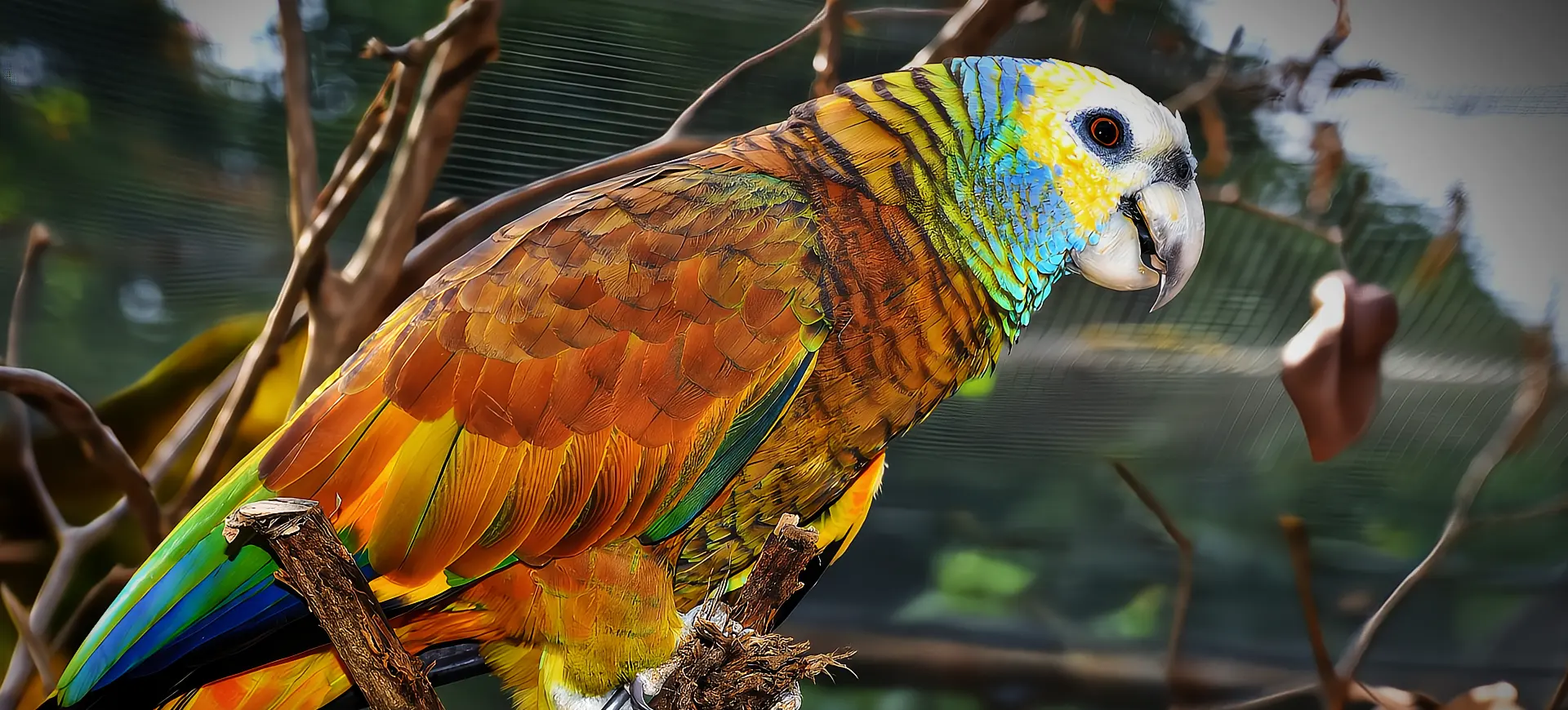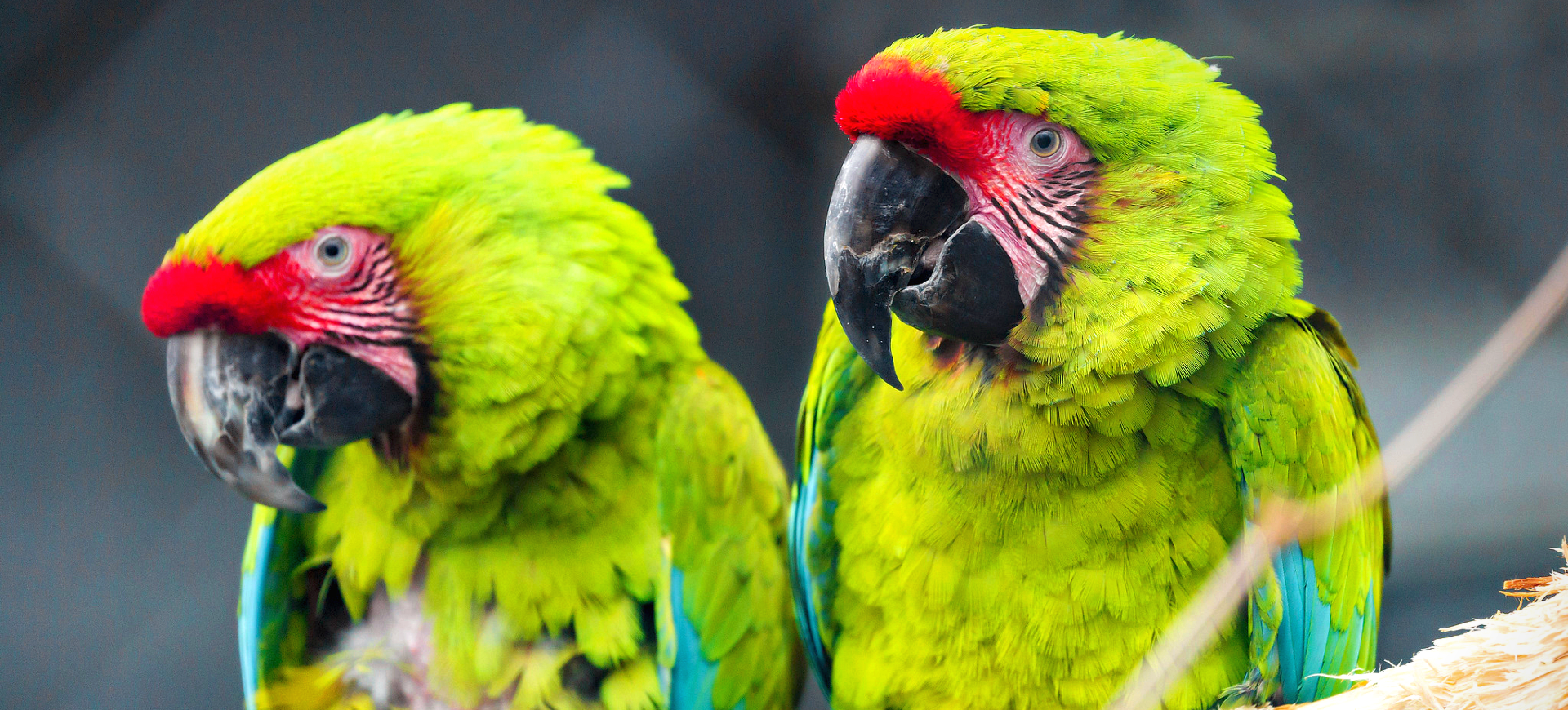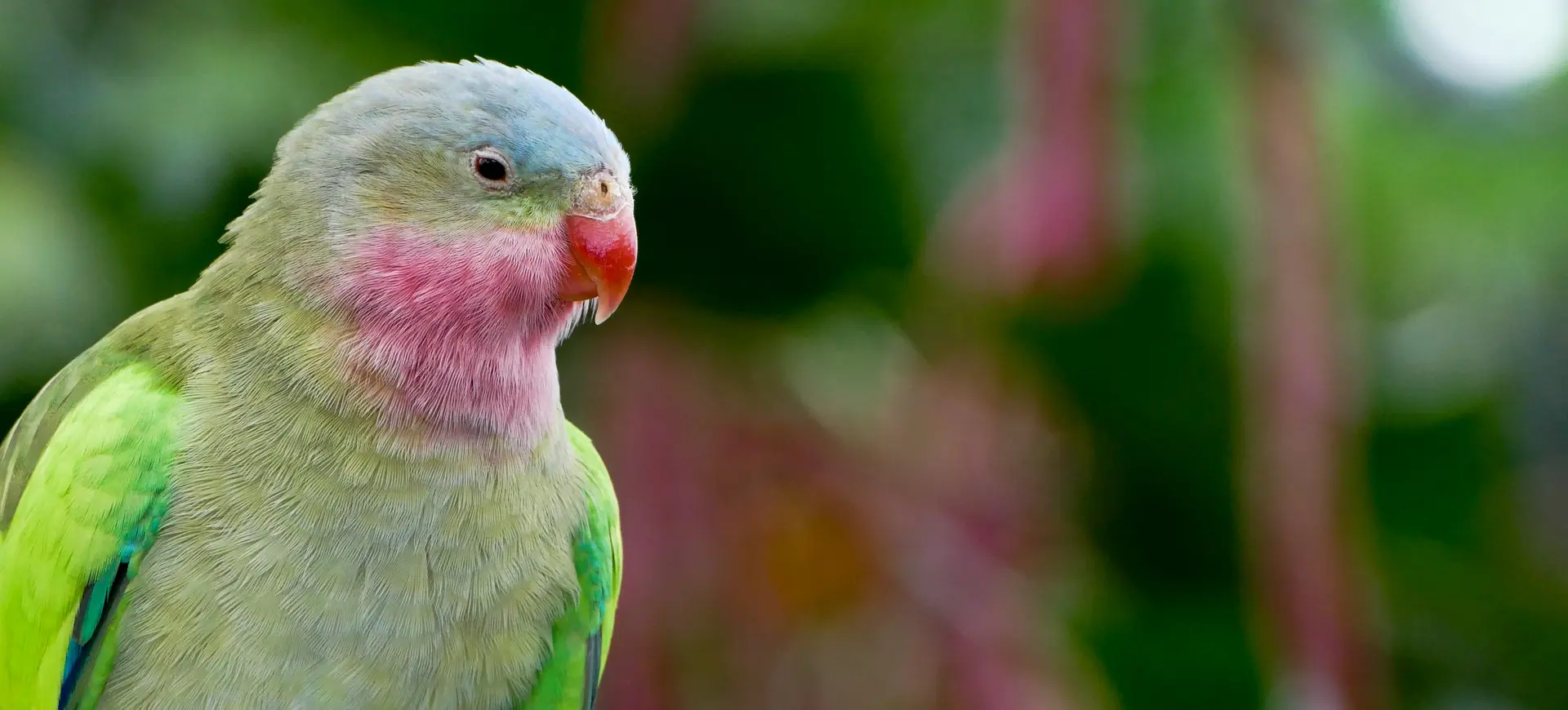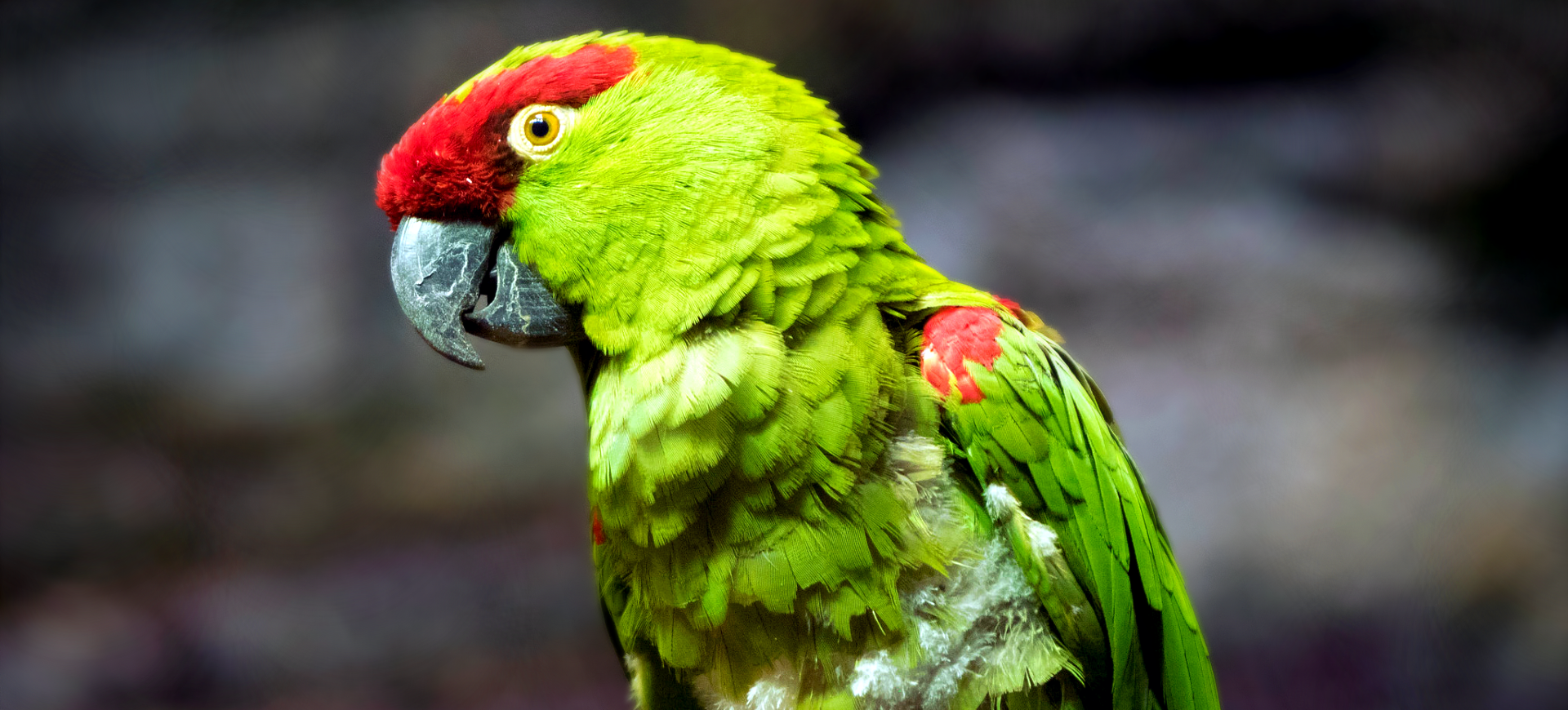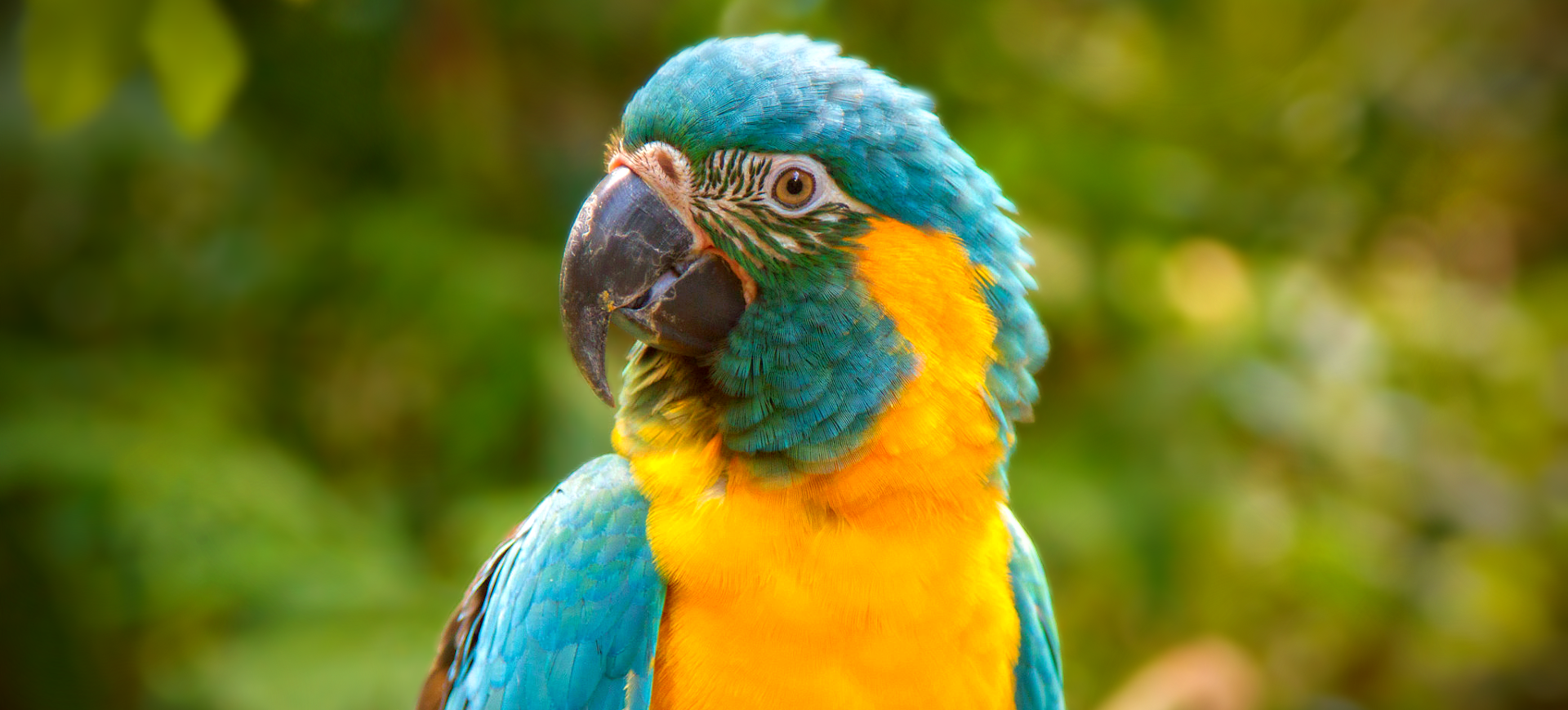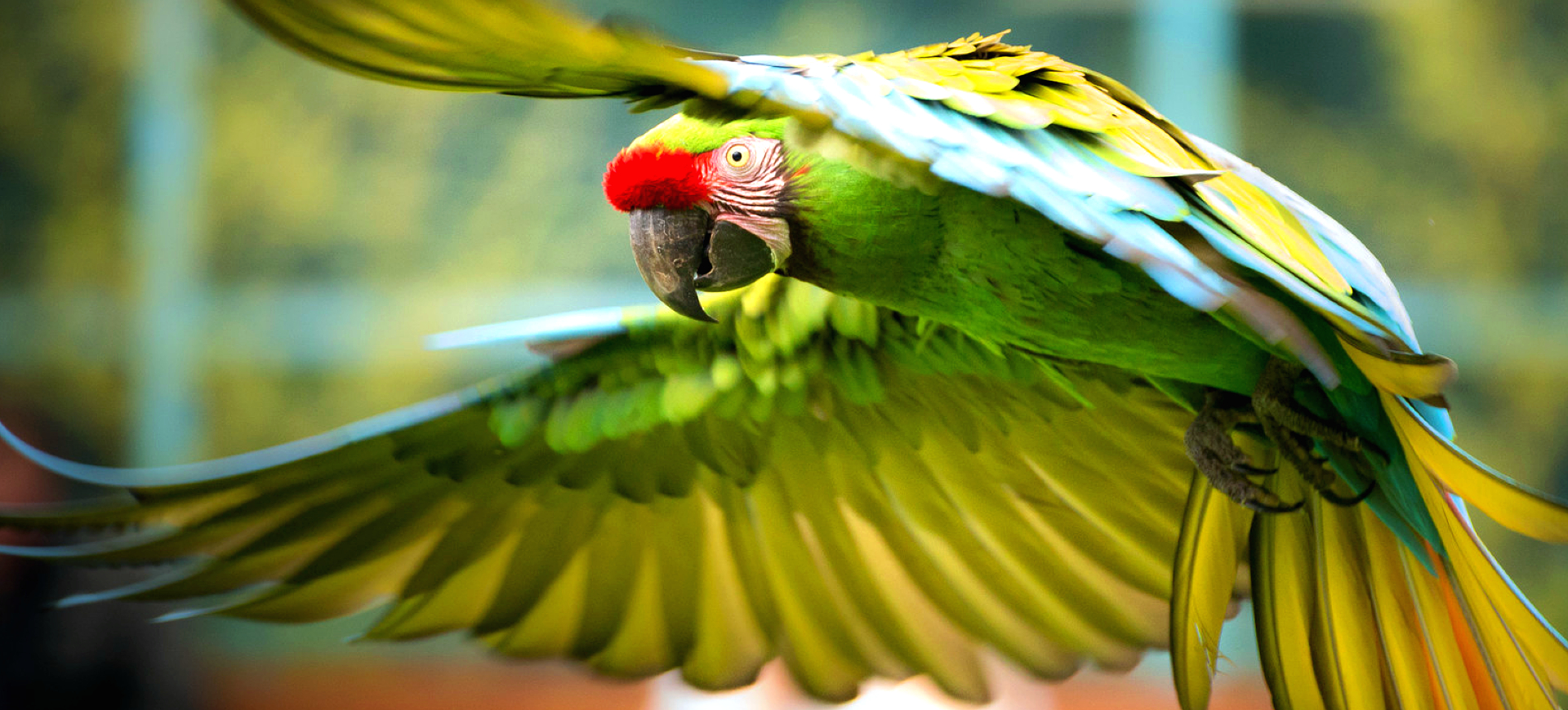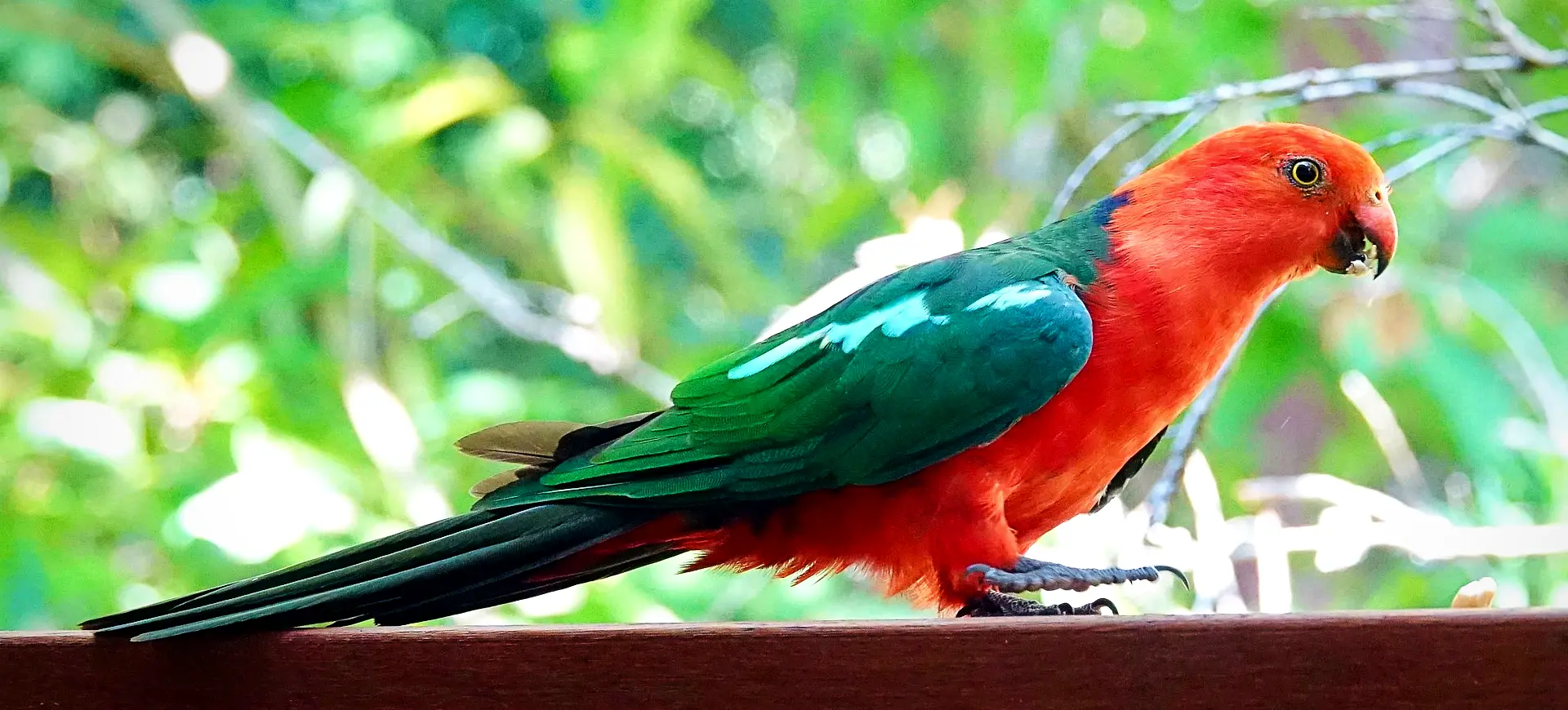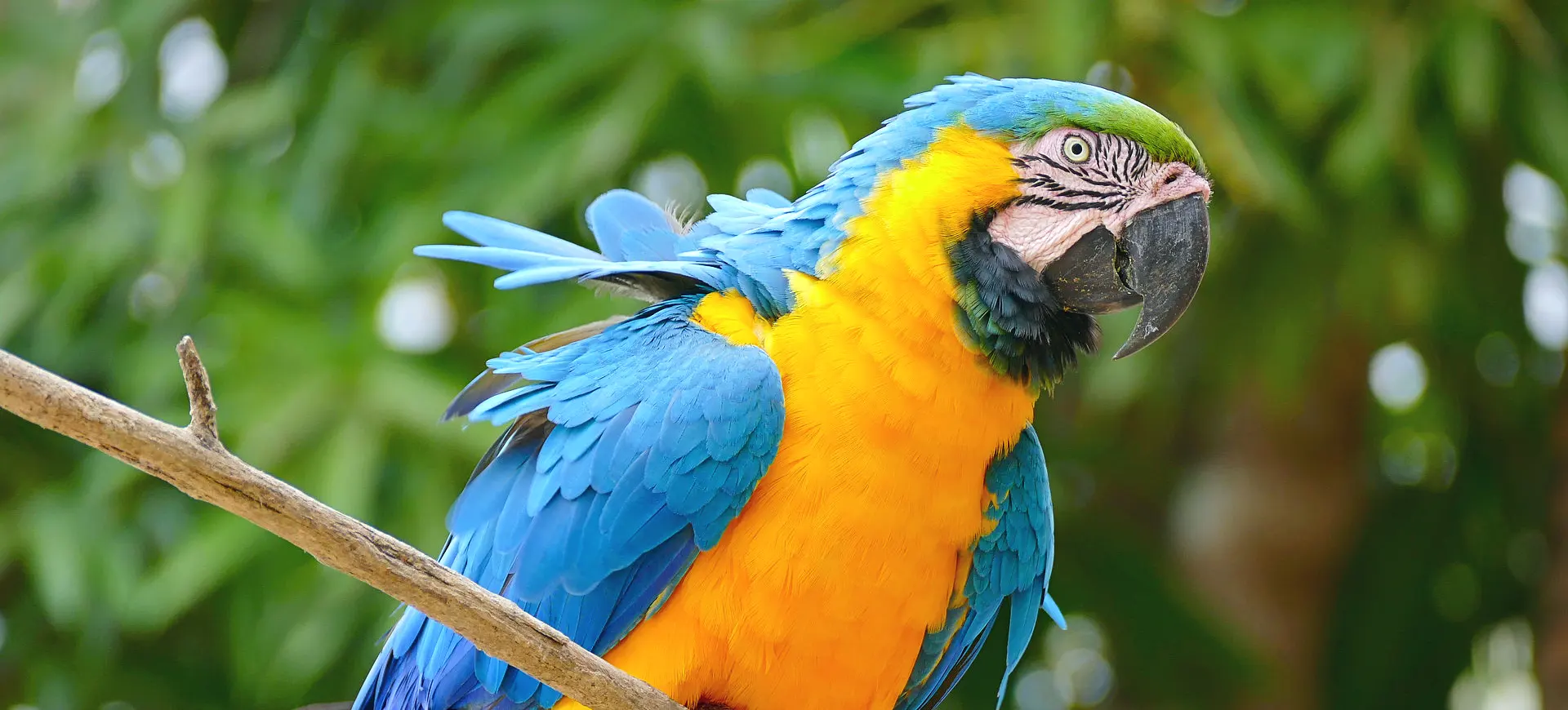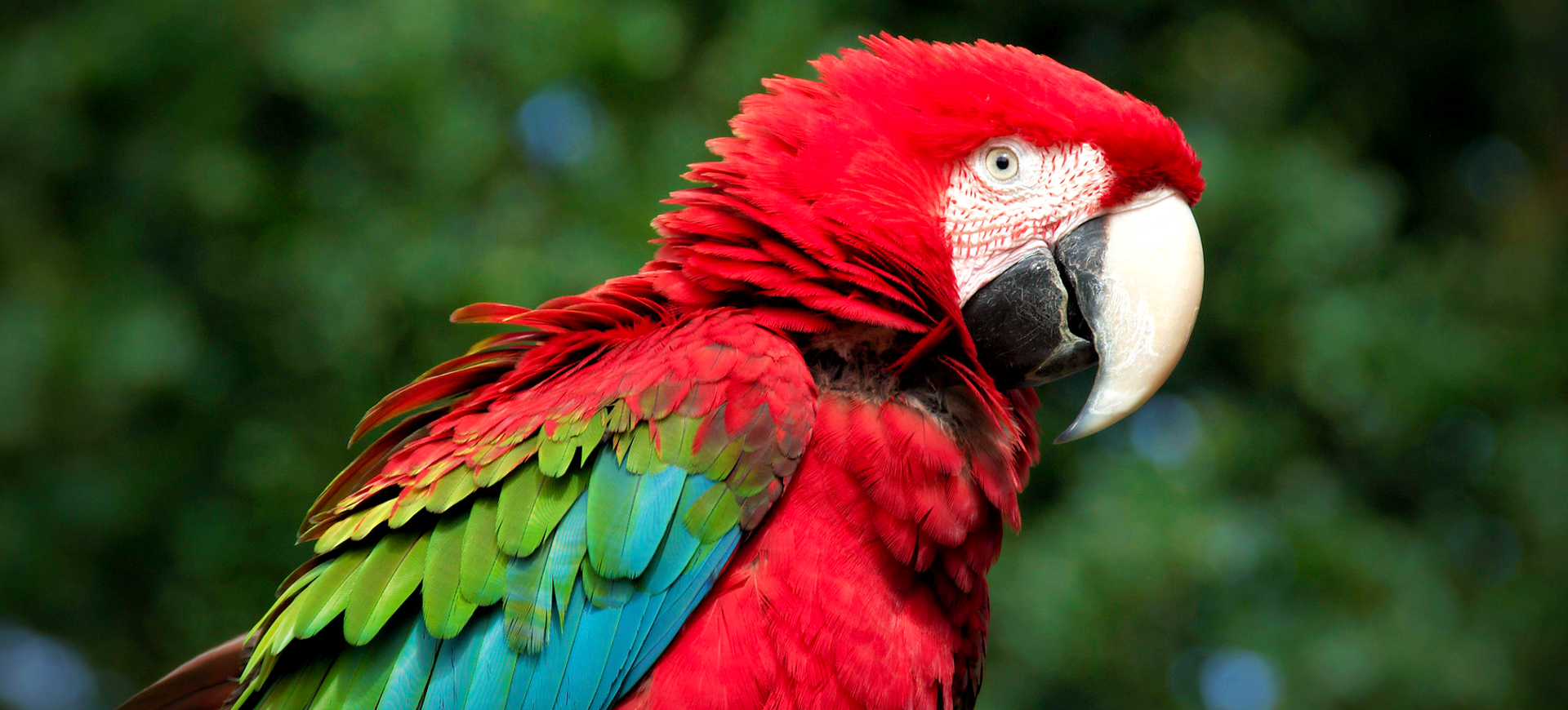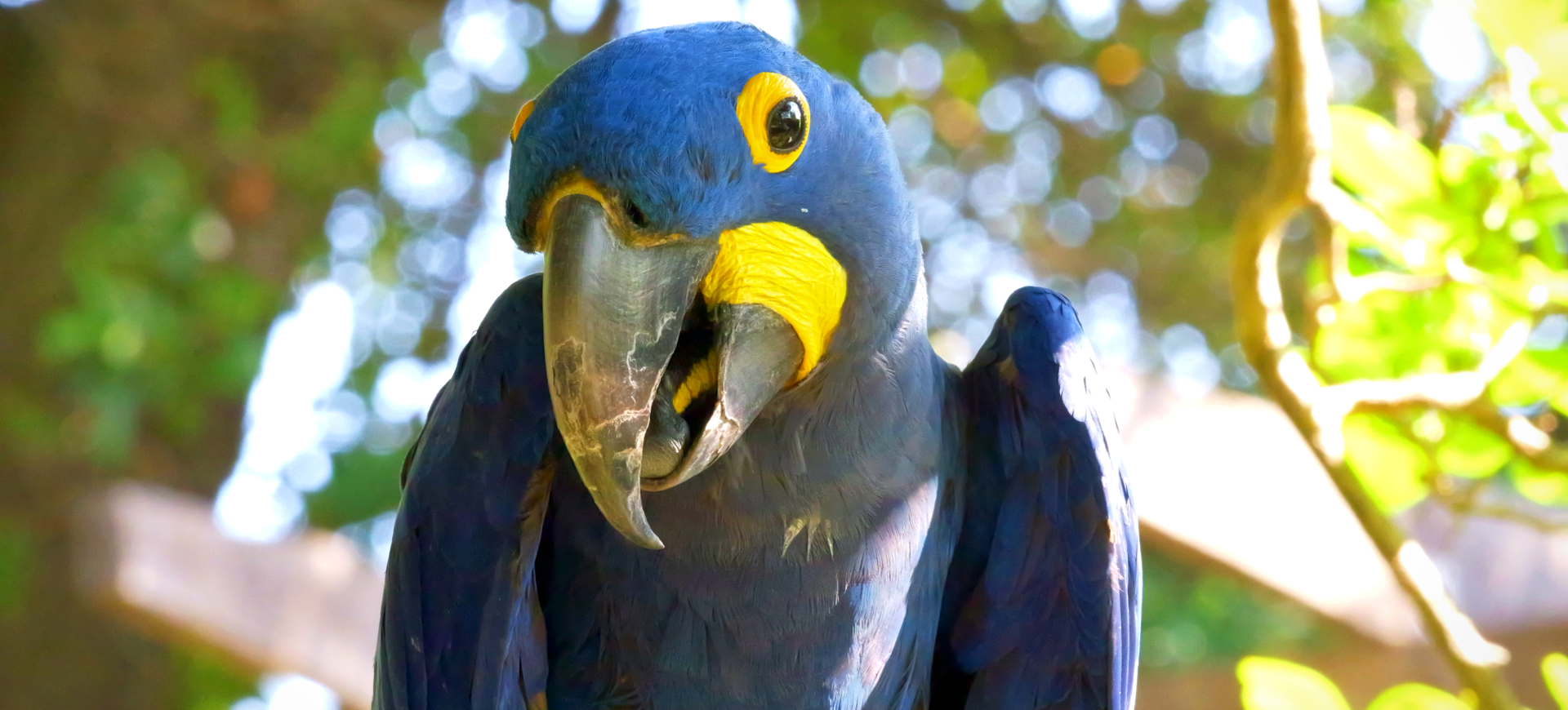Overview
The Golden Parakeet, or the Golden Conure or Aratinga guarouba, is a medium-sized parrot native to the Amazon Basin of interior northern Brazil. Its plumage is mostly bright yellow, giving it a striking appearance, with green in the wings and tail providing a beautiful contrast. Notably social and gregarious, these birds often form large, noisy flocks. They have a high-pitched call and are known for their playful nature, often seen swinging upside down from branches.
Golden Parakeets usually measure around 34 cm in length, making them one of the larger members of the Aratinga genus. Their weight ranges between 200 to 250 grams. These birds are primarily arboreal, spending most of their time in the tree canopies of the Amazon rainforest. They are an important part of the ecosystem, acting as seed dispersers due to their diet.
In terms of breeding behavior, Golden Parakeets are unique among parrots. They practice cooperative breeding, where group members assist in raising the young. This social structure is rare among birds and highlights the complex social interactions of these parrots.
Taxonomy
Kingdom
Phylum
Class
Order
Family
Genus
Species
Type
Physical Description:
The Golden Parakeet is distinguished by its predominantly bright yellow plumage, which covers most of its body, with only the tips of the wings and tail feathers displaying a rich green color. This vibrant coloring makes it one of the most visually striking parrots. Adults have a large, horn-colored beak and dark, expressive eyes, which add to their charismatic appearance. There is no sexual dimorphism in their plumage, making it difficult to distinguish between males and females based solely on appearance.
Juvenile Golden Parakeets are paler than adults and have a more subdued yellow hue. They gradually acquire their full coloration as they mature. These birds are known for their robust and compact body shape, contributing to their agile flight and maneuverability in dense forest canopies. The texture of their feathers is smooth and glossy, reflecting light and enhancing their golden appearance.

Lifespan: Wild: ~30 Years || Captivity: ~40 Years

Weight: Male & Female: 7-8.8 oz (200-250 g)

Length: Male & Female: 13-14 inches (33-36 cm)

Wingspan: Male & Female: 12-16 inches (30-41 cm)
Characteristic:
Native Habitat:
Golden Parakeets inhabit the Amazon rainforest, where they prefer dense, humid forest environments. They are typically found in the forest’s lower canopy and understory layers. These habitats provide ample food sources and nesting opportunities, crucial for their survival. Their natural habitat is characterized by high biodiversity, with a rich array of flora and fauna.
These birds are adapted to life in the trees, with strong feet and beaks that allow them to maneuver and feed effectively in this complex environment. The dense foliage of the rainforest offers them protection from predators and the elements. However, their habitat is increasingly under threat due to deforestation and habitat destruction.
Climate Zones:
Biomes:
WWF Biomes:
Biogeographical Realms:
Continents:
Countries:
Diet:
Diet & Feeding Habits:
Golden Parakeets are primarily frugivores, meaning they eat mostly fruits. Their diet in the wild consists of a variety of fruits, nuts, seeds, and berries. This diet is supplemented with flowers and the occasional insect, providing a balanced nutrient intake. Their strong beaks are well adapted for cracking open hard-shelled nuts and seeds.
In captivity, their diet must be carefully managed to prevent nutritional deficiencies. A commercially available parrot pellets diet, supplemented with fresh fruits, vegetables, and nuts, is recommended. Care must be taken to avoid foods toxic to parrots, such as avocado and chocolate. Regular access to fresh water for drinking and bathing is essential for their health and well-being.
Mating Behavior:
Mating Description:
Golden Parakeets have a unique breeding system known as cooperative breeding. In this system, a breeding pair is assisted by several other group members in raising their young. These helpers are typically offspring from previous breeding seasons. This cooperative behavior increases the survival rate of the chicks.
Breeding usually occurs during the rainy season, when food resources are abundant. Nesting occurs in tree cavities, where the female lays 2 to 4 eggs. The incubation lasts about 30 days, during which the male and helpers feed the female. After hatching, the chicks are cared for by the entire group, ensuring a high level of care and protection.
Reproduction Season:
Birth Type:
Pregnancy Duration:
Female Name:
Male Name:
Baby Name:
Social Structure Description:
Golden Parakeets are highly social birds, typically found in flocks ranging from 10 to 30 individuals. These flocks are often family groups with strong social bonds between members. They engage in various social behaviors, including mutual preening and communal roosting, reinforcing these bonds.
Their cooperative breeding behavior is a notable aspect of their social structure. Non-breeding flock members help rearing the young, a behavior that benefits the entire group. This cooperative approach is considered an adaptation to the challenging environment of the Amazon rainforest, where raising offspring requires significant effort and resources.
Groups:
Conservation Status:
Population Trend:
The wild population of Golden Parakeets is under significant pressure due to habitat loss and the illegal pet trade. Deforestation for agriculture, logging, and mining activities in the Amazon has led to the fragmentation of their habitat, isolating populations. This fragmentation reduces genetic diversity and makes them more vulnerable to environmental changes.
The illegal pet trade also poses a significant threat to their survival. Due to their striking appearance, Golden Parakeets are highly sought after in the pet trade. Despite legal protections, poaching for the pet trade continues, often targeting juveniles. Conservation efforts must address both habitat protection and the enforcement of laws against poaching to ensure the survival of these birds.
Population Threats:
Deforestation is the primary threat to the Golden Parakeet, leading to the loss of their natural habitat. The expansion of agriculture, particularly soy farming, cattle ranching, and logging and mining activities, has significantly reduced their living space. This habitat destruction reduces their available nesting and feeding areas and makes them more accessible to poachers.
Additionally, climate change poses a long-term threat, potentially altering the ecosystem of the Amazon rainforest. Changes in rainfall patterns and temperature could affect the availability of food resources, impacting their survival. Continued monitoring and research are necessary to understand the full impact of climate change on their habitat.
Conservation Efforts:
Conservation efforts for the Golden Parakeet include habitat protection, legal enforcement against poaching and illegal trade, and public education. Several protected areas and national parks within their range provide crucial safe havens for these birds. Conservation organizations are working to expand and effectively manage these protected areas.
Captive breeding programs play a significant role in their conservation. These programs aim to maintain a healthy, genetically diverse population in captivity, which can potentially be used for reintroduction into the wild. Public education campaigns raise awareness about the illegal pet trade and the importance of habitat conservation.
Additional Resources:
Fun Facts
- Golden Parakeets are one of the few parrot species that practice cooperative breeding.
- Their bright yellow plumage is unique among the New World parrots.
- They can mimic human speech, though not as proficiently as some other parrot species.
- In Brazilian folklore, they are often associated with good luck and happiness.
- Their nests are usually found in large, old trees with natural cavities.
- Golden Parakeets are diurnal, active during the day and resting at night.
- They have a strong beak that can easily crack open hard nuts and seeds.
- These birds play a role in seed dispersal and forest regeneration in their native habitats.
- Golden Parakeets maintain strong pair bonds, often seen grooming each other, strengthening their social ties.
- In captivity, they are known for their playful nature and can be quite affectionate with their human caretakers.






